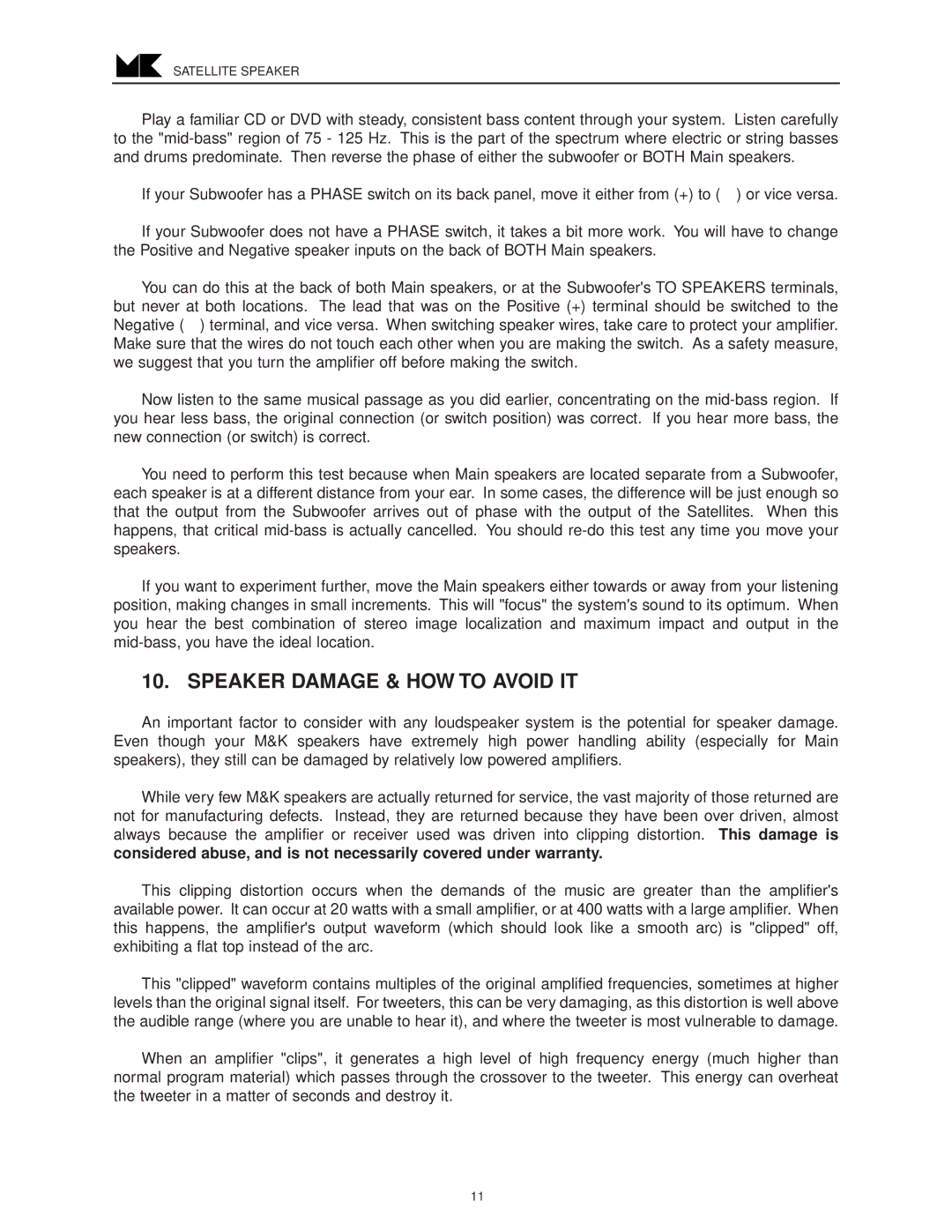LCD-35, LCD-25 specifications
MK Sound has long been synonymous with high-quality audio performance, and its LCD series of loudspeakers, including the LCD-25 and LCD-35, continues this tradition. Both models embody the company's dedication to delivering exceptional sound quality, precision engineering, and innovative technologies tailored for audiophiles and casual listeners alike.The MK Sound LCD-25 is a compact yet powerful loudspeaker designed to deliver an immersive listening experience. It features a 5.25-inch woven composite woofer that provides a robust low-frequency response, while a 1-inch silk dome tweeter ensures smooth high-frequency reproduction. This combination creates a balanced sound profile that is ideal for various musical genres and movie soundtracks. The LCD-25 is equipped with a bass reflex design, enhancing its overall efficiency and delivering deep, punchy bass without distortion.
On the other hand, the MK Sound LCD-35 takes it up a notch with its larger 6.5-inch woofer for even deeper bass response and a more impactful soundstage. The LCD-35 also integrates a 1-inch silk dome tweeter and features an updated crossover network that ensures seamless integration between the woofer and tweeter, resulting in a more cohesive sound. Both models utilize MK Sound’s proprietary technology to minimize interference and ensure clarity in sound reproduction, making them ideal for critical listening environments.
One significant feature of both the LCD-25 and LCD-35 is their exceptional build quality. The cabinets are constructed from high-density MDF, which reduces resonance and acoustic interference, allowing for a more accurate soundstage. Additionally, they come with an attractive finish that complements any décor, making them suitable for both home and professional settings.
Another noteworthy characteristic is the versatility of both models. They can be used in various configurations, including stereo setups, home theaters, or as part of a professional audio system. With their high sensitivity ratings, the LCD-25 and LCD-35 can be easily paired with a variety of amplifiers without sacrificing sound quality.
In conclusion, the MK Sound LCD-25 and LCD-35 are exemplary loudspeakers that offer remarkable sound performance, high-quality construction, and flexible application. Whether for home audio enthusiasts or professional settings, these models signify the best of what MK Sound has to offer in the world of high-fidelity audio.
